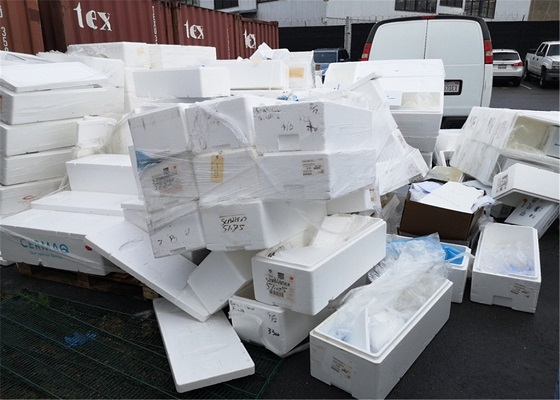Has recycling of fish boxes using polystyrene compactor reached saturation in Europe?
Fish box recycling is gaining traction in Europe, especially in the context of sustainable development and the reduction of plastic waste. Fish boxes are mainly made of EPS foam and other plastic materials. These materials are often used to protect and transport fish and seafood products, but they are difficult to degrade in the environment and are often mishandled. Despite the existence of recycling facilities, overall recycling rates for fish boxes are still low. In some countries, recycling rates can reach 20% to 30%, but in many areas, especially in small fishing ports, recycling activities are not yet complete. Therefore, in Europe, the use of recycling equipment such as polystyrene compactor to recycle fish boxes is far from saturated. Some European countries, such as Germany, the Netherlands and Sweden, have established dedicated recycling networks to deal with discarded fish boxes. Recycling facilities are able to sort and reprocess these materials.

A lack of awareness among many consumers and small-scale fisheries about how to dispose of fish boxes results in large amounts of material being discarded carelessly. Fortunately, as people's environmental awareness continues to increase, more and more people in the industry realize that polystyrene fish boxes can be recycled, so more and more people are starting to look for polystyrene fish boxes solution.As a packaging for fresh food, it is absolutely not allowed to be reused as food packaging without treatment. Therefore, the correct way is to recycle waste correctly. Currently, the most effective way to recycle polystyrene fish boxes is to use polystyrene compactor for recycling. The distinctive feature of fish boxes is their high water content, so GREENMAX recommends the use of cold pressing technology for recycling.
.jpg)
The EU-driven plastics strategy emphasizes reducing single-use plastic use and promoting recycling. Policies targeting fish boxes include encouraging the fishing and food industries to participate in recycling programmes. Some countries have implemented EPR policies that require manufacturers to be responsible for the entire life cycle of their packaging materials, including recycling and disposal. The introduction and implementation of the above policies are also the reason why the demand for fish box recycling is increasing, but it is far from saturated. We still need continuous efforts on the road of using polystyrene compactor recycling.

